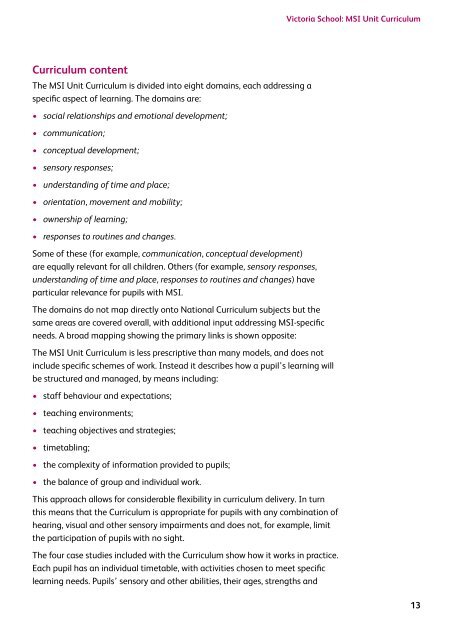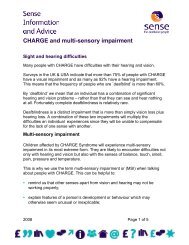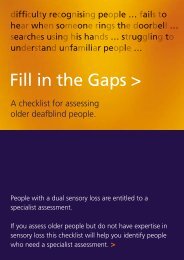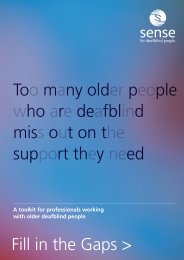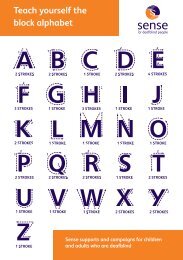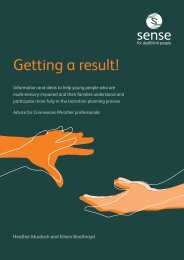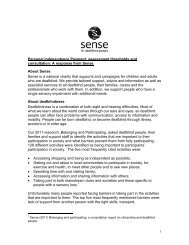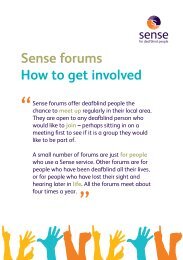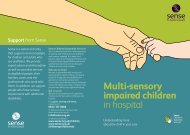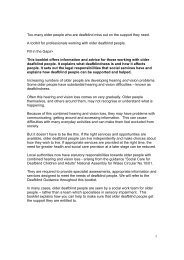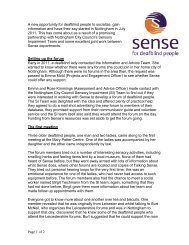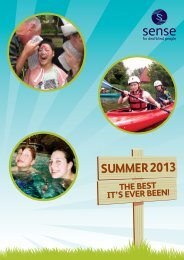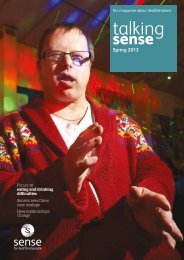MSI Unit Curriculum - Sense
MSI Unit Curriculum - Sense
MSI Unit Curriculum - Sense
Create successful ePaper yourself
Turn your PDF publications into a flip-book with our unique Google optimized e-Paper software.
Victoria School: <strong>MSI</strong> <strong>Unit</strong> <strong>Curriculum</strong><strong>Curriculum</strong> contentThe <strong>MSI</strong> <strong>Unit</strong> <strong>Curriculum</strong> is divided into eight domains, each addressing aspecific aspect of learning. The domains are:• social relationships and emotional development;• communication;• conceptual development;• sensory responses;• understanding of time and place;• orientation, movement and mobility;• ownership of learning;• responses to routines and changes.Some of these (for example, communication, conceptual development)are equally relevant for all children. Others (for example, sensory responses,understanding of time and place, responses to routines and changes) haveparticular relevance for pupils with <strong>MSI</strong>.The domains do not map directly onto National <strong>Curriculum</strong> subjects but thesame areas are covered overall, with additional input addressing <strong>MSI</strong>-specificneeds. A broad mapping showing the primary links is shown opposite:The <strong>MSI</strong> <strong>Unit</strong> <strong>Curriculum</strong> is less prescriptive than many models, and does notinclude specific schemes of work. Instead it describes how a pupil’s learning willbe structured and managed, by means including:• staff behaviour and expectations;• teaching environments;• teaching objectives and strategies;• timetabling;• the complexity of information provided to pupils;• the balance of group and individual work.This approach allows for considerable flexibility in curriculum delivery. In turnthis means that the <strong>Curriculum</strong> is appropriate for pupils with any combination ofhearing, visual and other sensory impairments and does not, for example, limitthe participation of pupils with no sight.The four case studies included with the <strong>Curriculum</strong> show how it works in practice.Each pupil has an individual timetable, with activities chosen to meet specificlearning needs. Pupils’ sensory and other abilities, their ages, strengths and13


